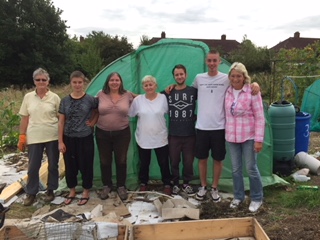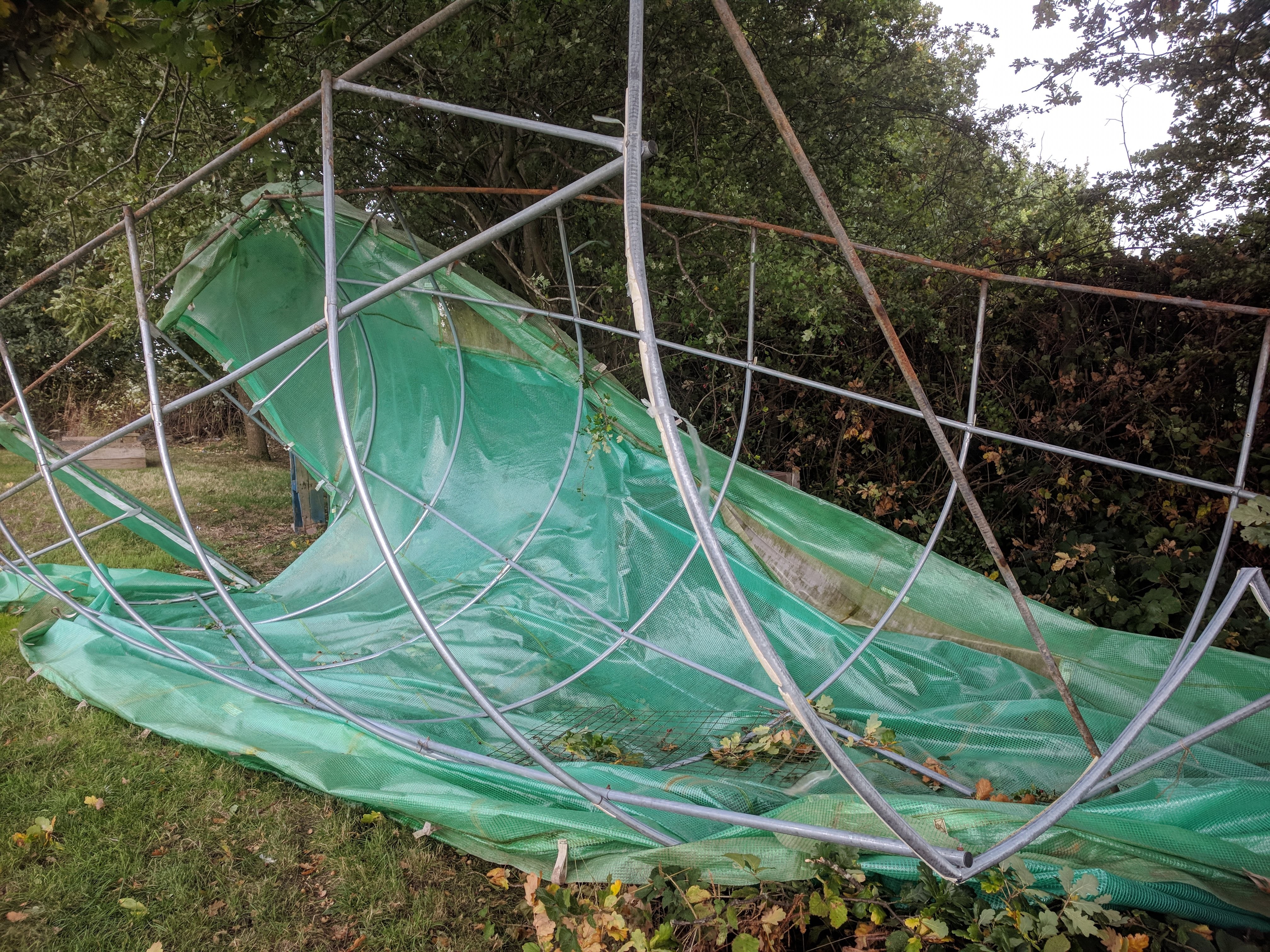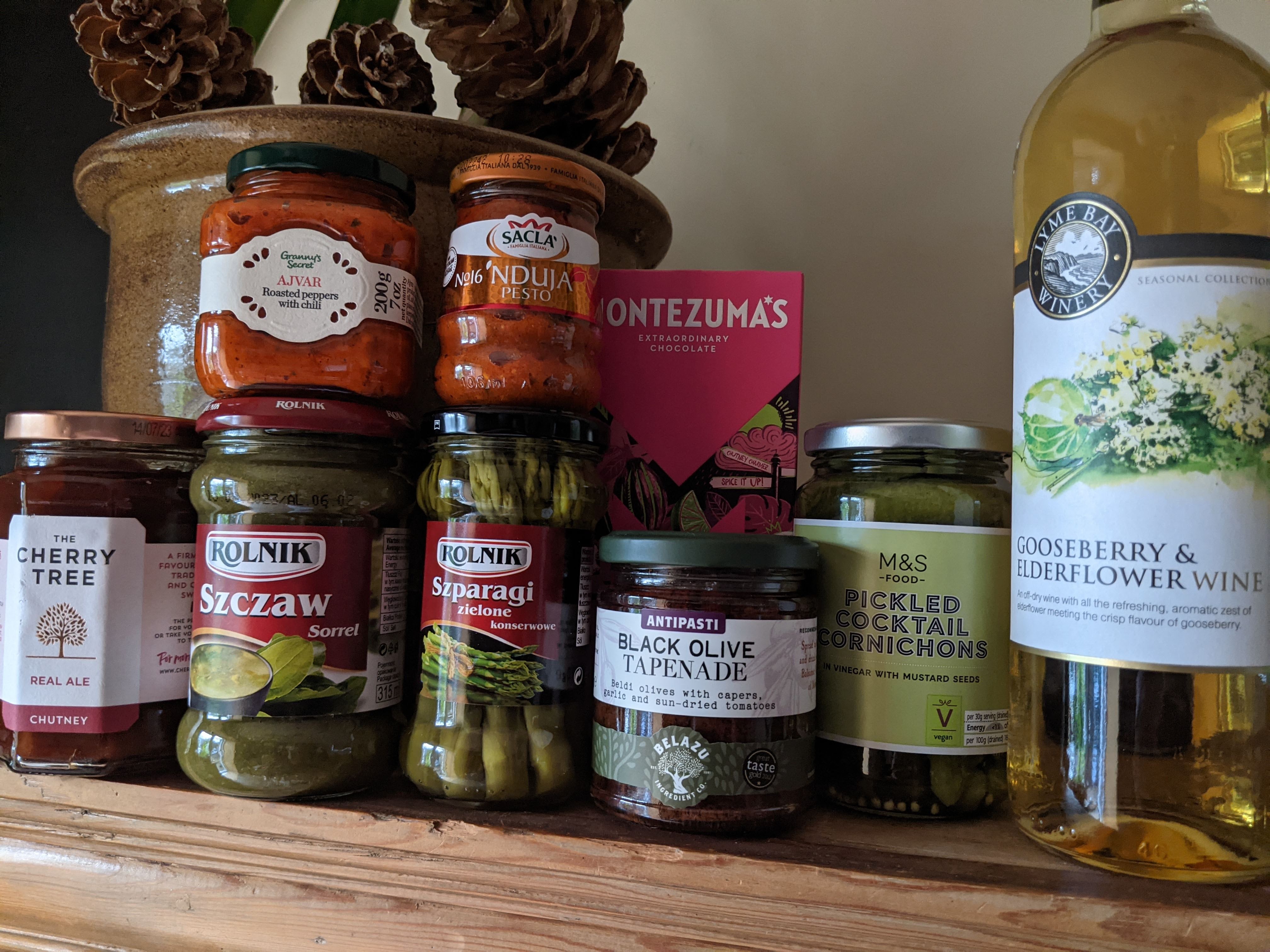
My (now adult) children (& a couple of friends) have hit on a sure-fire way to bring a smile to my face at Christmas time – they buy me food (& drink!) So on Christmas morning I had the most humungus pile of gifts as each item was individually wrapped and each little package revealed new delights and in several cases comestibles that I had never tasted before.
Of course I’ve eaten some already – and before I thought to take photographs – so they are almost a distant memory even after just a week (a pack of spicy ramen noodles eaten with the addition of a pack of enoki mushrooms. a pack of vegan kabanos and marmite crackers) but others will provide joy for weeks to come. My eldest had done most of their shopping in a Polish deli whilst my son had opted for a chinese supermarket so there were a range of flavours and future recipes to contemplate – part of the joy.


So from Rowan a pot of jam meant not your regular strawberry or raspberry but sea buckthorn – a fruit I have never tried but is on my list of wants to grow on my plot. Not sure I’m getting the full hit of this fruits flavour in a jam that is so full of apple juice as a sweetener but its enough to keep it on my want list. And despite never having eaten meat themselves they bought me ‘nduja pesto (personally i think pesto should only be based around basil, pine nuts, parmesan and olive oil and anything else is just a sauce or even a spread – but I’m not called a pedant for nothing!). Another new one for me was a jar of sorrel for use in Polish soups. I’ve always grown sorrel but now can indulge my love of its lemony acidity even whilst my plants are dormant. And I can make some more quick but tasty pasta dishes with the roast pepper and chilli sauce and a jar of asparagus spears.

And from Aidan there are some big bold flavours to use (possibly in moderation!) including a lethal looking black bean paste and pickled lettuce in soy sauce (peering inside the jar I wonder if this is actually sliced stems of celtuce which I grew in 2020 and may include in my growing plans for this year too). There is also a pack of dried ingredients containing items that I would not be able to identify by sight and am still not certain about despite having read the info on the back – Glehnia root? Diascora opposita? and Jade bambo all of which can be used to make the basis of a broth for soup. Since I have started growing a wider variety of ‘oriental greens’ including chopsuey greens, mustards, celtuce etc on my plot I have wanted to do more than simply throw them into a generic stir fry so am looking forward to experimenting with some of these products and finding some specific recipes that highlight their individual flavours.
And to wash it all down I have a bottle of gooseberry and elderflower wine – not a flavour combo I have tried before but if I like it I may try to make my own this year.
So although my offspring have once more returned to their respective homes I shall continue to enjoy their gifts for some time to come – and hope they remember its my birthday in just 6 weeks time 😉


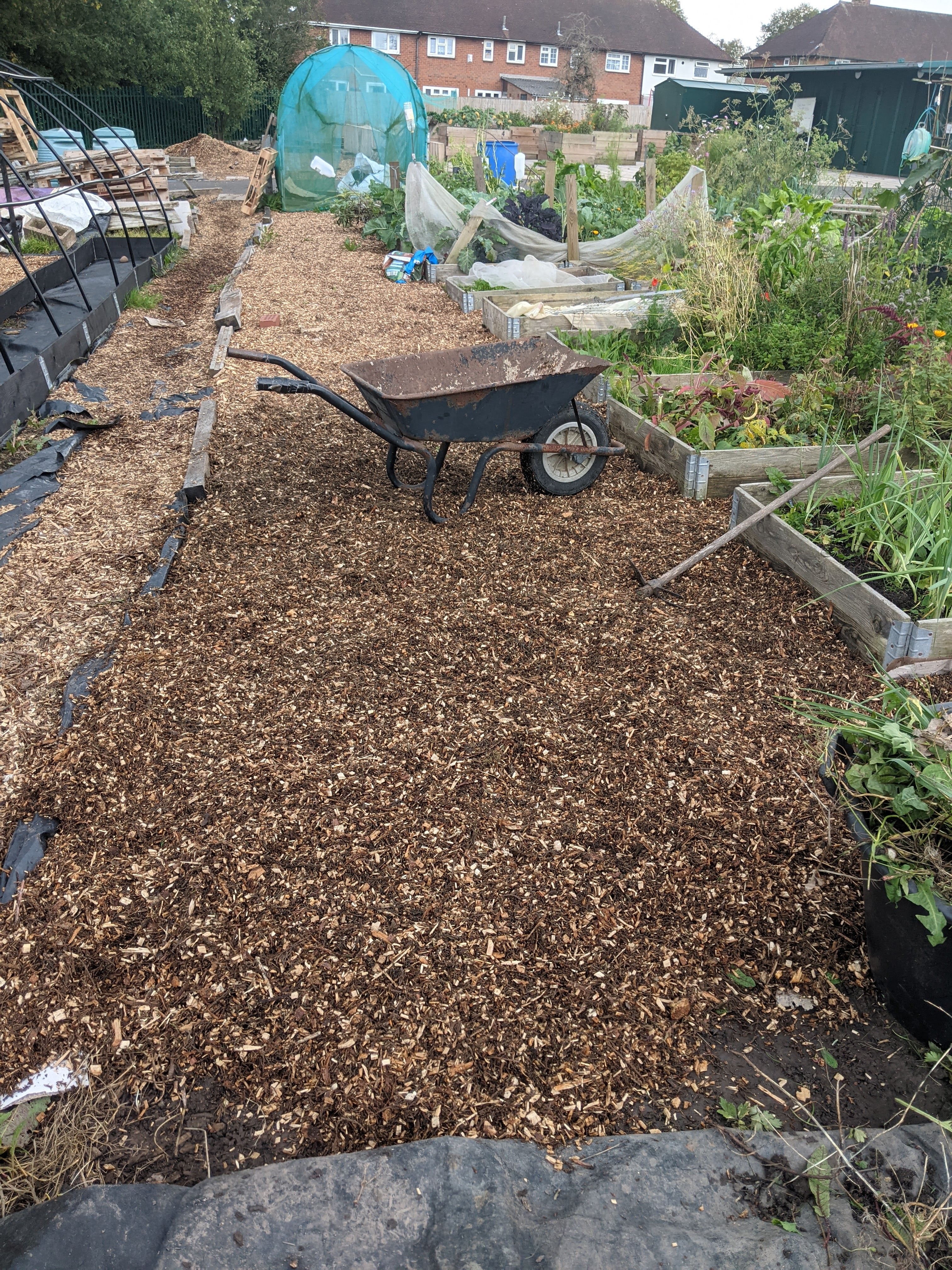



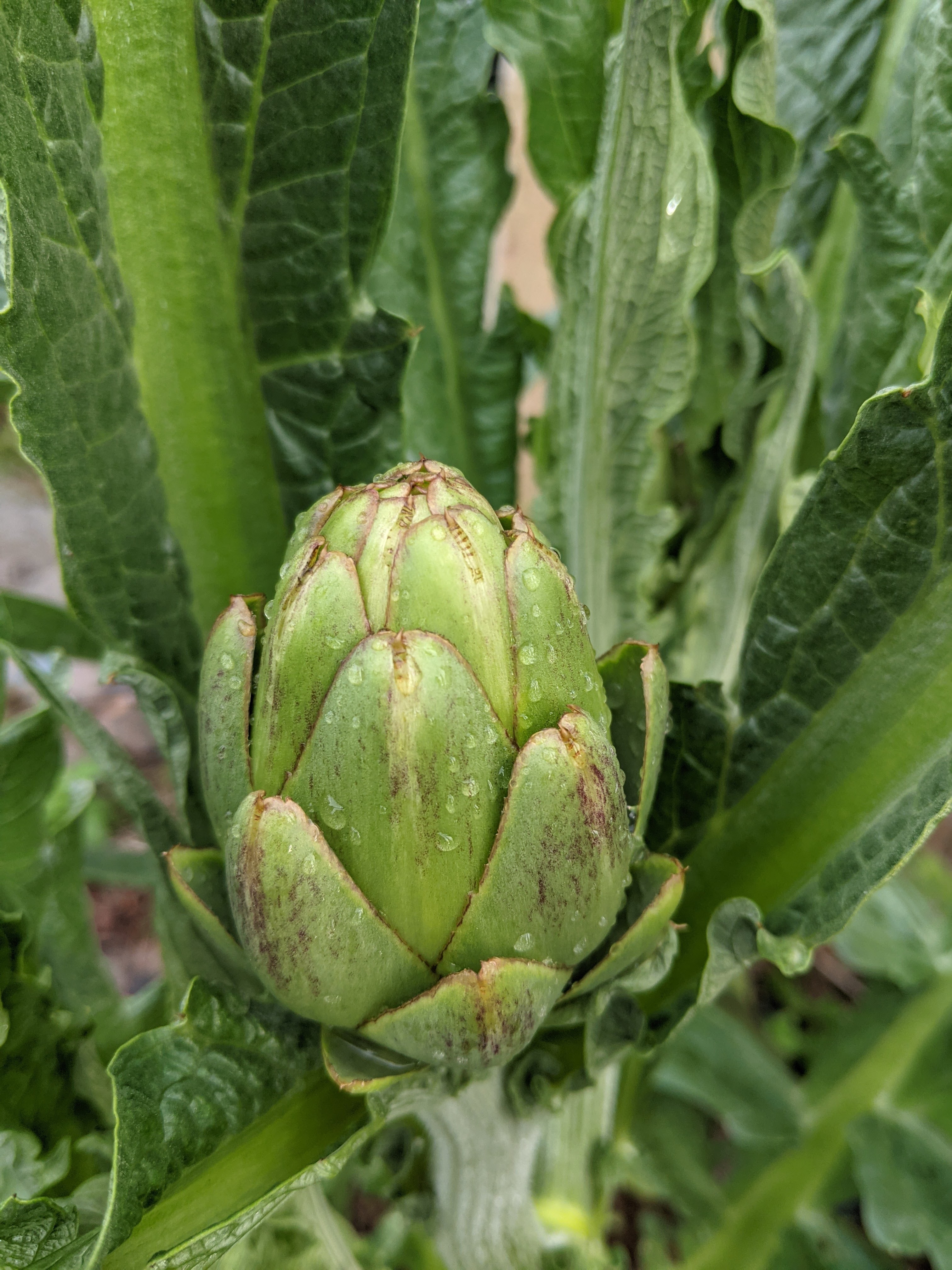


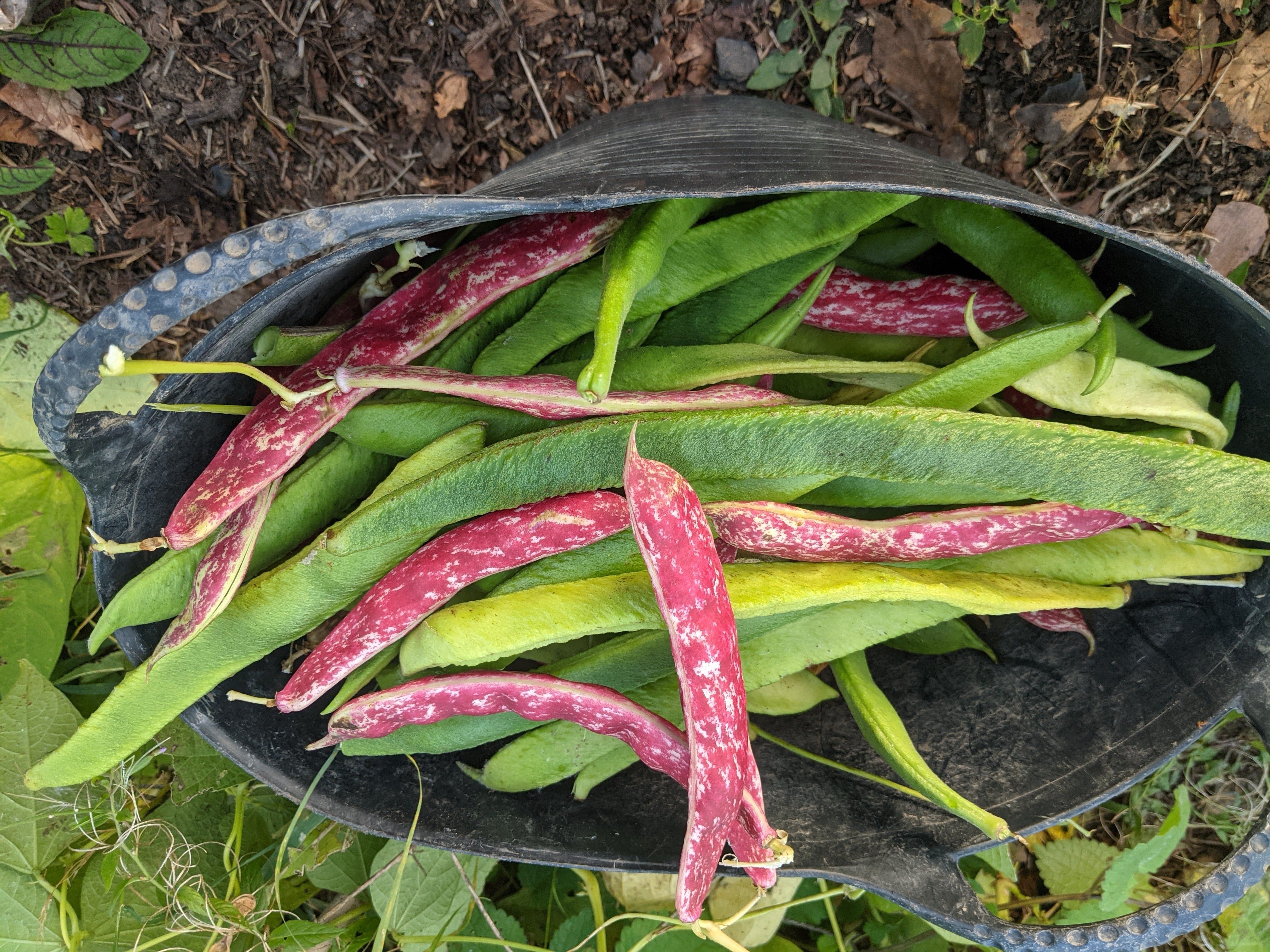





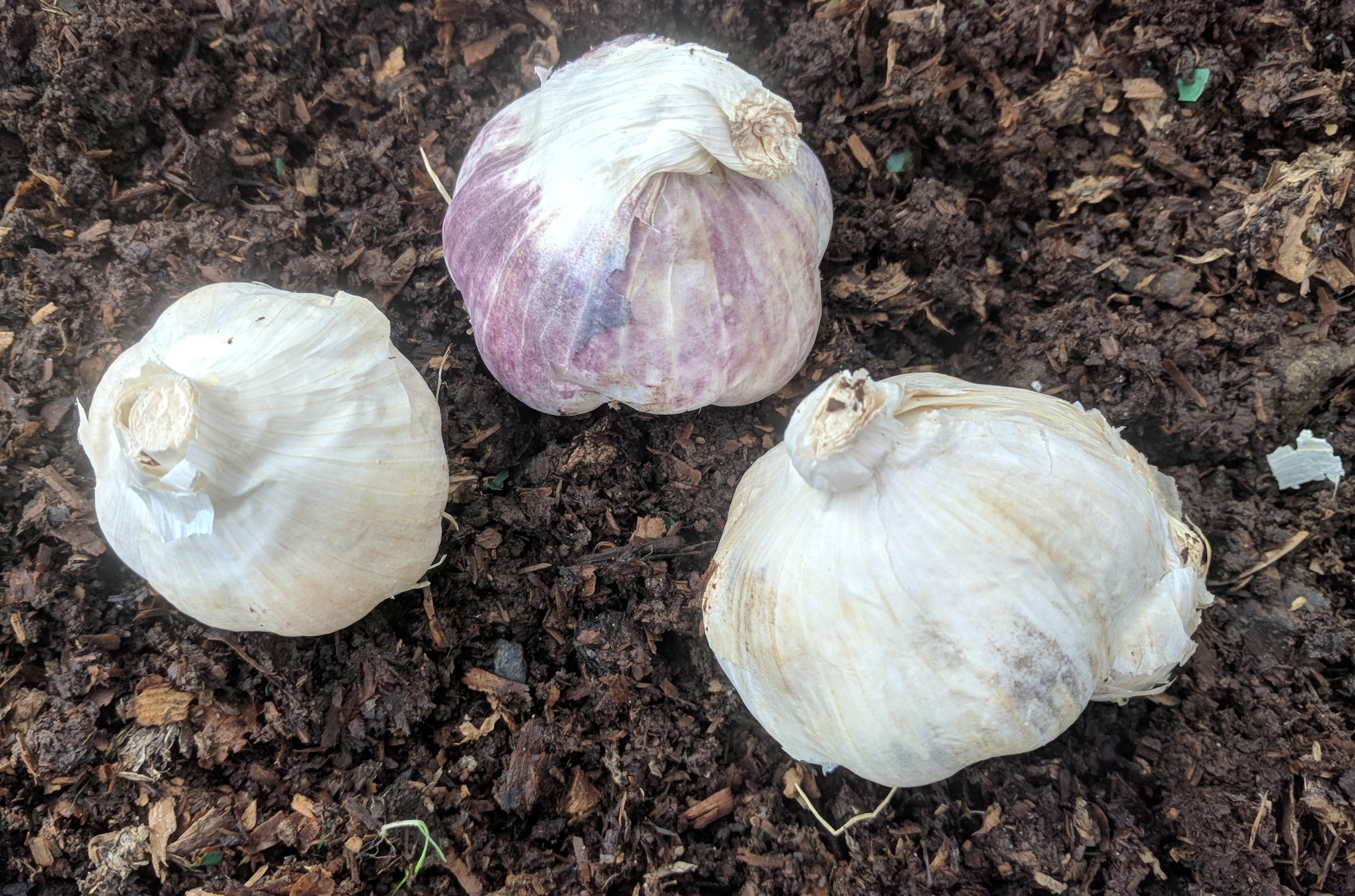














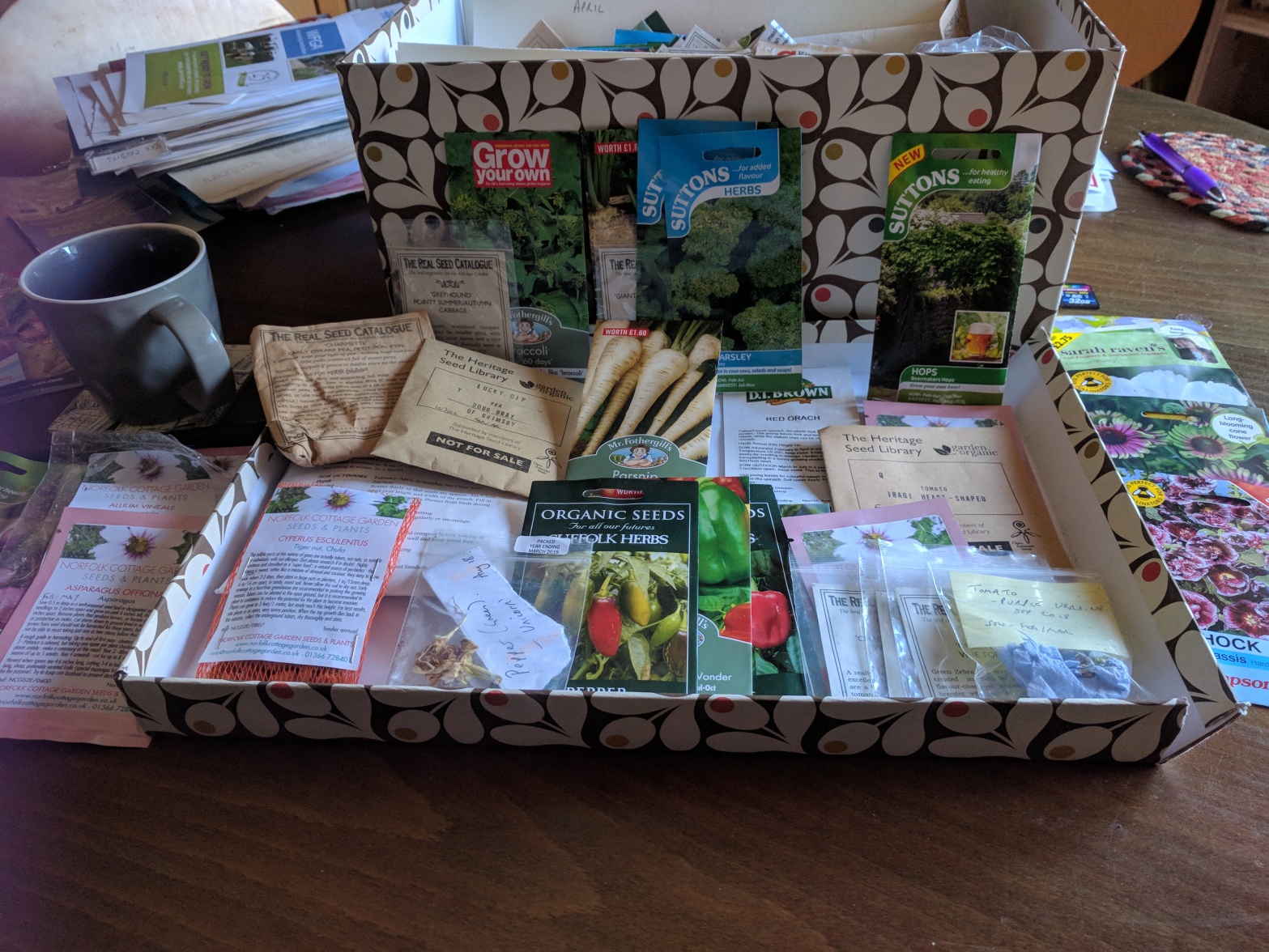
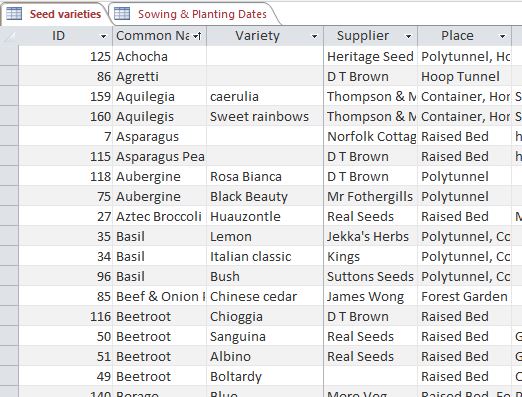
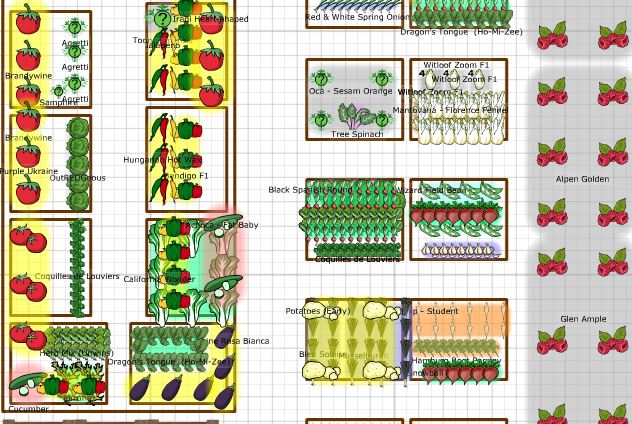







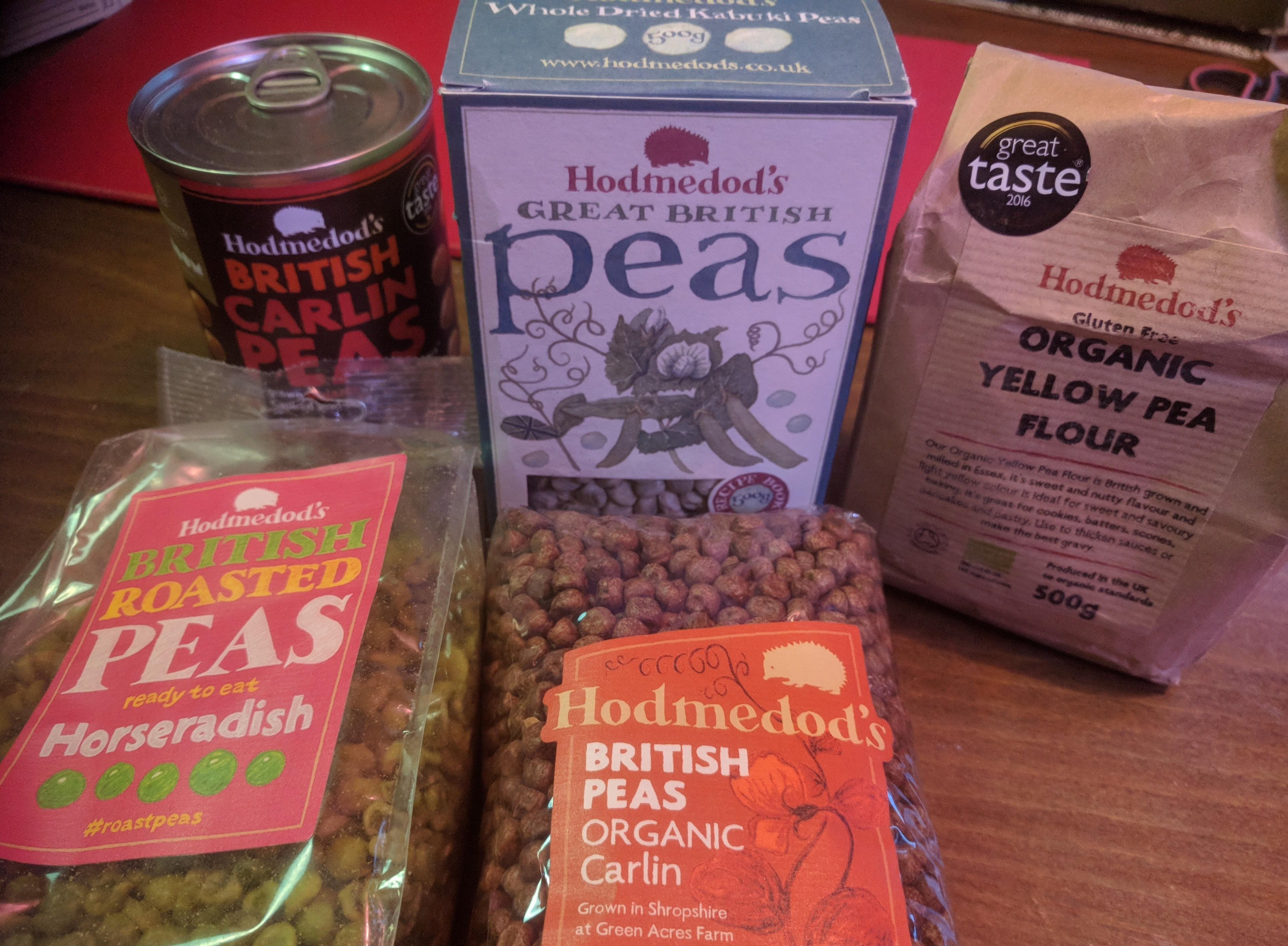
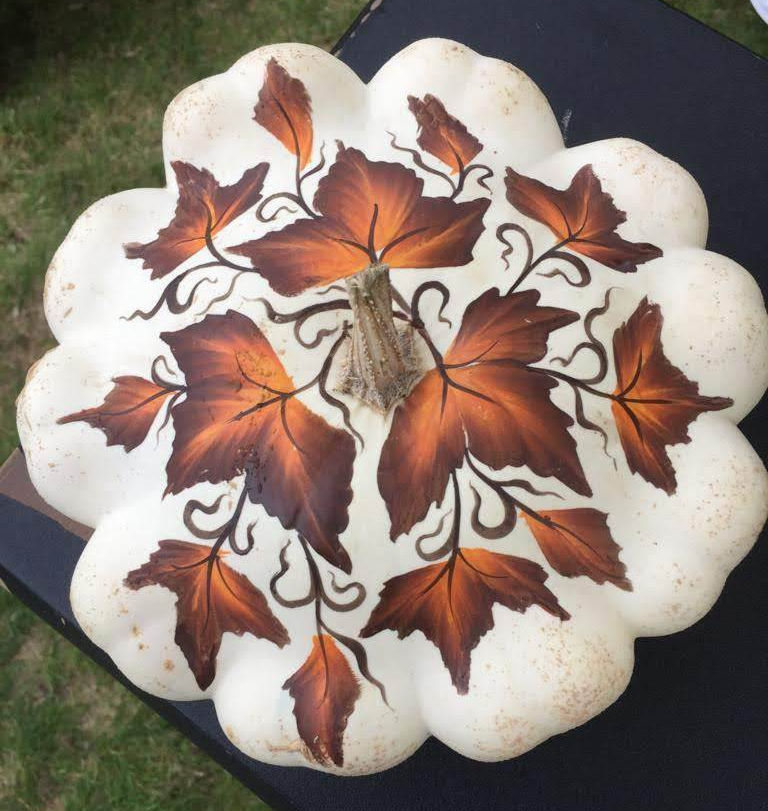
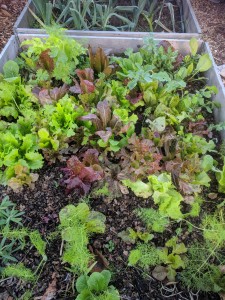 – taking a few leaves at a time from each plant. Throughout the summer I’d had no success at all despite several sowings but by September my last sowing had germinated and despite a slow start finally produced a decent crop and the plants are still going strong. This mix includes Reds, greens, brights, darks, splashes, blushes, crisps, butters, leafs, heads, and tongues. The mix is really attractive in a salad and all of them are tasty.I’m harvesting a bag full of leaves about once a week. Surprisingly they last really well in the fridge – much better than a commercial bag of salad despite them probably being in a protective atmosphere (at least until the bag is opened!).
– taking a few leaves at a time from each plant. Throughout the summer I’d had no success at all despite several sowings but by September my last sowing had germinated and despite a slow start finally produced a decent crop and the plants are still going strong. This mix includes Reds, greens, brights, darks, splashes, blushes, crisps, butters, leafs, heads, and tongues. The mix is really attractive in a salad and all of them are tasty.I’m harvesting a bag full of leaves about once a week. Surprisingly they last really well in the fridge – much better than a commercial bag of salad despite them probably being in a protective atmosphere (at least until the bag is opened!).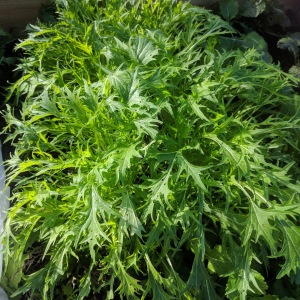 mizuna and with some mustard greens too. I was intending to make some successional sowings but haven’t gotten around to it (yet!) But if the mizuna keeps producing as well as it is at the moment maybe it’ll keep me going all winter….
mizuna and with some mustard greens too. I was intending to make some successional sowings but haven’t gotten around to it (yet!) But if the mizuna keeps producing as well as it is at the moment maybe it’ll keep me going all winter….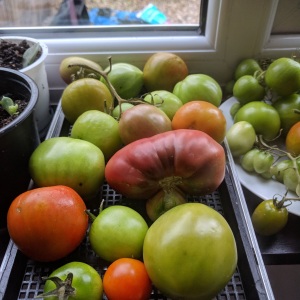 now although I do still have some from my garden ripening on the kitchen windowsill. I’m not a huge fan of chutneys (have to confess I prefer Branston pickle) so will wait for them to ripen gradually. I do fry some of them green and have with a breakfast fry-up.
now although I do still have some from my garden ripening on the kitchen windowsill. I’m not a huge fan of chutneys (have to confess I prefer Branston pickle) so will wait for them to ripen gradually. I do fry some of them green and have with a breakfast fry-up.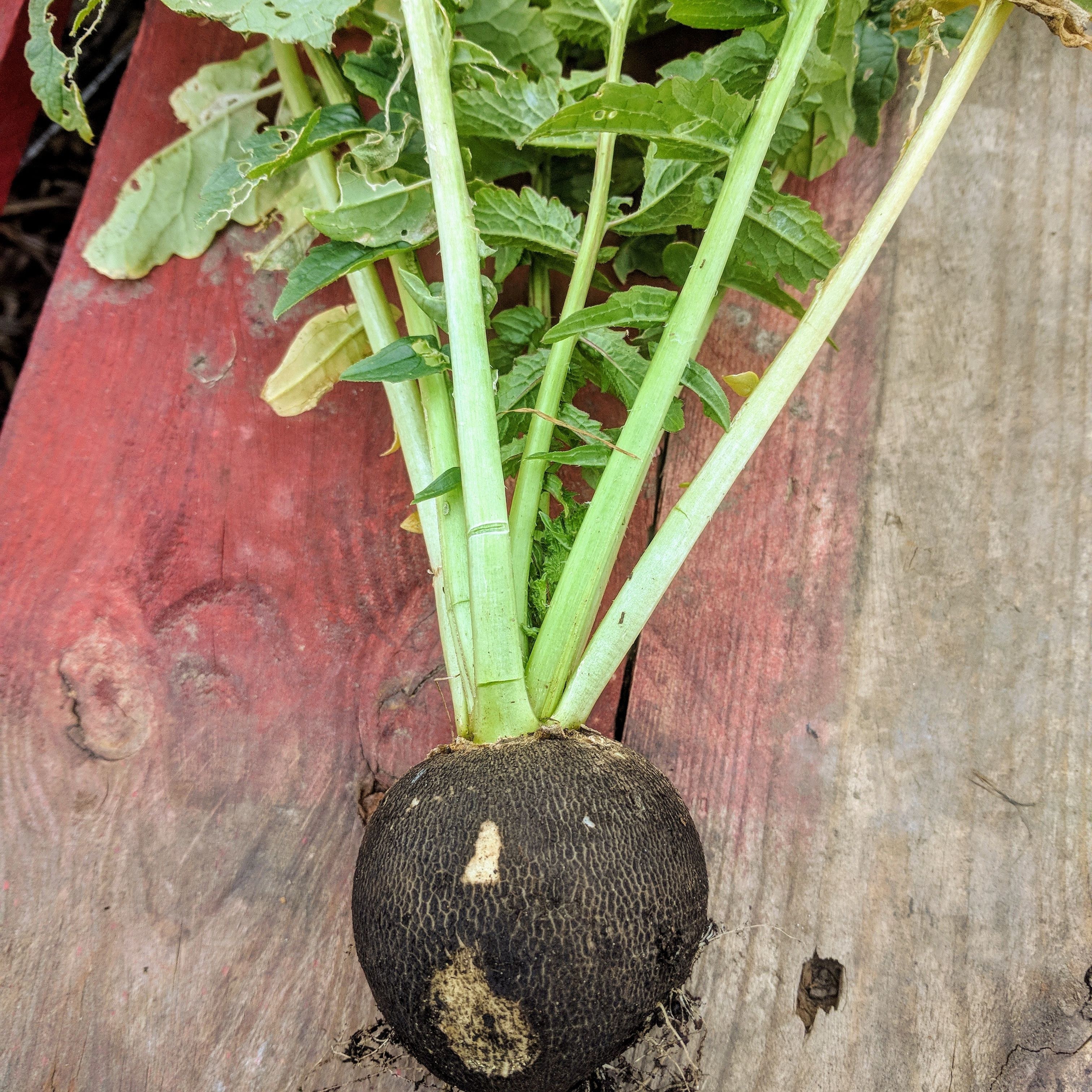 actually taste quite pleasant. So I’ve tried some Spanish black radish
actually taste quite pleasant. So I’ve tried some Spanish black radish

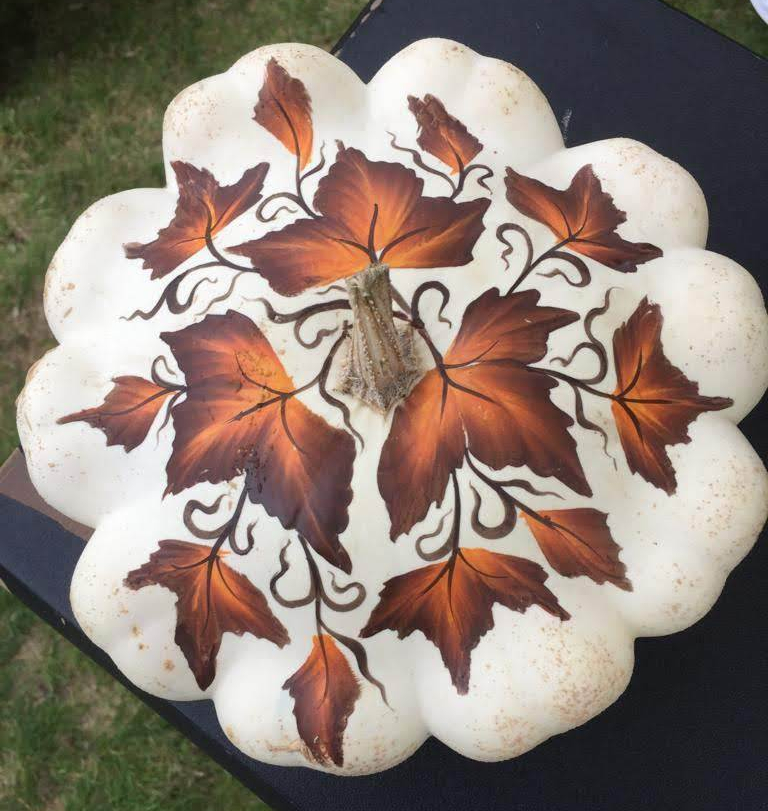
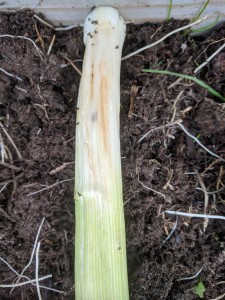 which have been infected by the dreaded allium leaf miner. The green leaves showed no signs so I was unaware of it until I harvested a couple of stems last week. So I’ve now harvested them all and disposed of any infected material. And so instead of a crop that I hope would keep me going over winter, I’ve been left with a few usable remnants that might just be enough to make me cup-of-soup! And of course, I am also a tad worried in case the bugs get onto my young garlic or onions. I’d planted elephant garlic in a gap in the leek bed but following the discovery of the ‘miners’ thought I should move them before they got too established. But furtling around in the soil to find them as they don’t have any green growth yet I was surprised to discover how much root growth they had put on. I didn’t feel I wanted to disturb them as they were doing well so decided to take a chance on leaving them in situ and will cover them with mesh to prevent any later infestations.
which have been infected by the dreaded allium leaf miner. The green leaves showed no signs so I was unaware of it until I harvested a couple of stems last week. So I’ve now harvested them all and disposed of any infected material. And so instead of a crop that I hope would keep me going over winter, I’ve been left with a few usable remnants that might just be enough to make me cup-of-soup! And of course, I am also a tad worried in case the bugs get onto my young garlic or onions. I’d planted elephant garlic in a gap in the leek bed but following the discovery of the ‘miners’ thought I should move them before they got too established. But furtling around in the soil to find them as they don’t have any green growth yet I was surprised to discover how much root growth they had put on. I didn’t feel I wanted to disturb them as they were doing well so decided to take a chance on leaving them in situ and will cover them with mesh to prevent any later infestations.